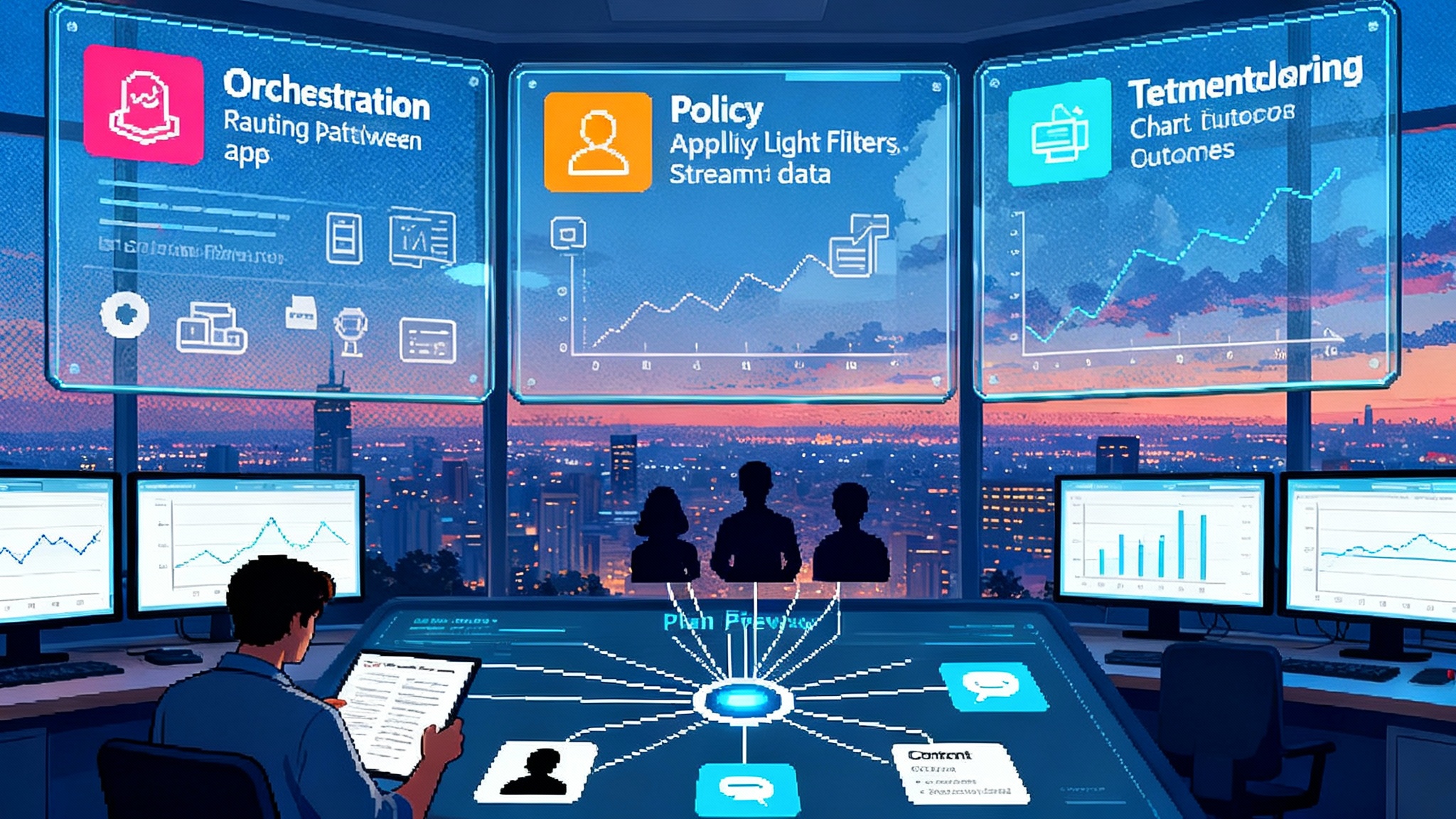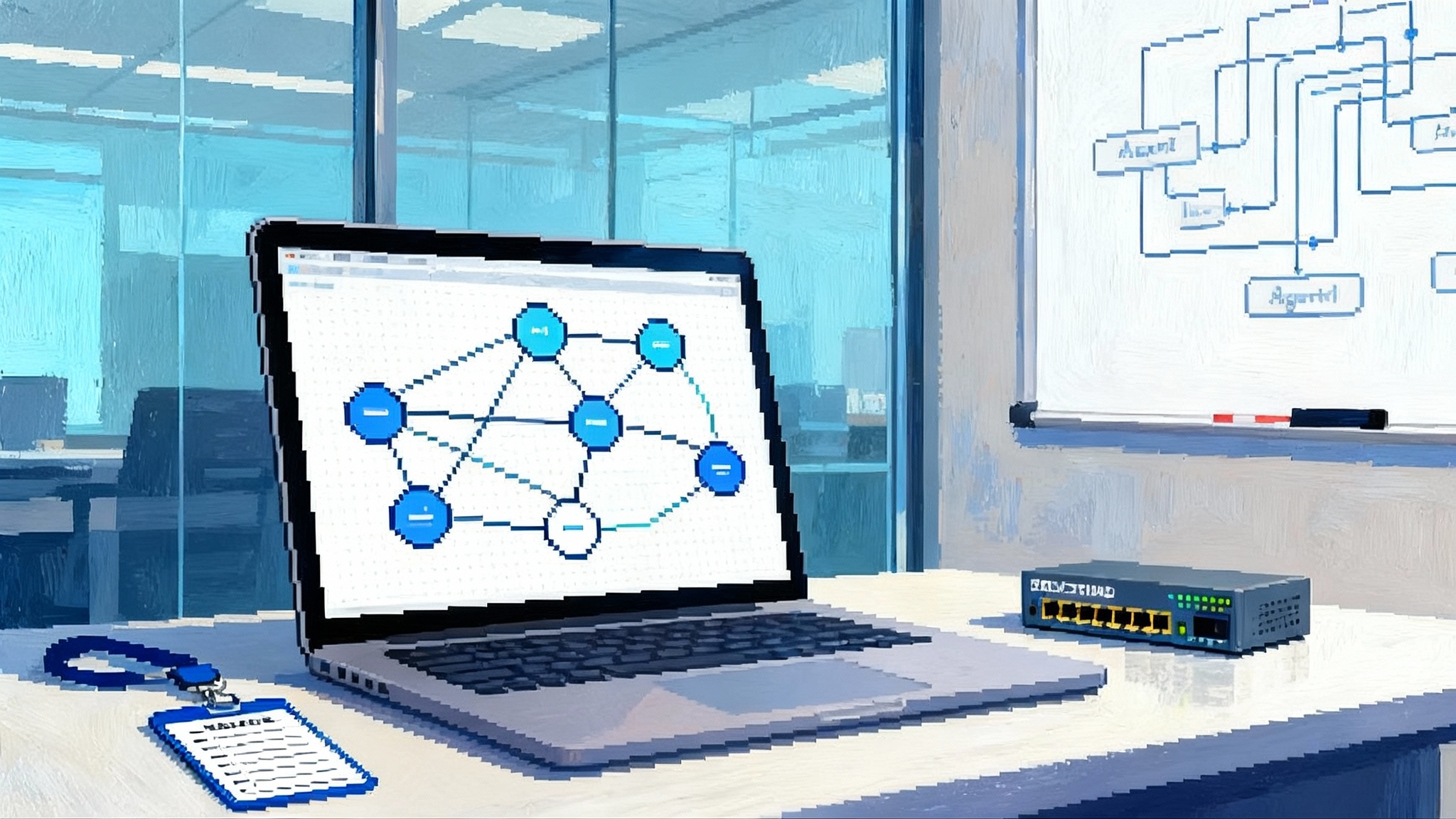Salesforce Agentforce 360 turns CRM into an agent platform
Salesforce is recasting CRM as an agent platform. Agentforce 360 adds templates, a curated marketplace, and Slack-first execution to deploy policy-aware agents across sales, service, commerce, and IT with real governance.

CRM becomes a fabric of agents
Salesforce has turned its core customer relationship management stack into something bigger and more kinetic. With Agentforce 360, the company is positioning its platform as a way to design, govern, and operate fleets of autonomous and semi autonomous agents that work across sales, service, commerce, and internal operations. On October 13, 2025, Salesforce announced Agentforce 360 and framed it as the foundation of an agentic enterprise, a model where human teams collaborate with software agents around the clock to move work forward.
What is materially new is not only the presence of agents. It is the packaging for scale: starter templates for common functions, a marketplace of composable parts, deep chat integration in Slack, and operational controls that look more like a security operations center than an app settings page. That is why this matters now. Enterprise buyers do not just want a chatbot. They want systems that perform work, respect policy, and can be measured and managed.
What Agentforce 360 adds to the stack
Think of Agentforce 360 as three layers that sit on top of Salesforce’s existing clouds.
Design layer
Visual builders, templates, and skills define what an agent can do. Example templates include lead qualification in sales, knowledge search and case triage in service, return authorizations in commerce, and common IT tasks like access provisioning. These templates come with prewired actions to Salesforce objects, Data Cloud segments, knowledge articles, and external systems through connectors. The goal is to reduce the distance between a business intent and a production agent that can act on it.
Execution layer
Agents run in the same data and identity context as your Salesforce users. They can be proactive on triggers, reactive to prompts in applications, or orchestrated by workflows. A reasoning engine and retrieval layer ground responses in customer data and turn intent into actions. Because the agents execute inside your existing org, permissions and policies carry over without custom plumbing.
Operations layer
An Agent Command Center gives teams a control tower for production use. You can monitor agent health, throughput, latency, success rates, escalations, costs, and compliance. This is also where teams set guardrails, approvals, and audit policies, and where they version agents, roll back changes, and test updates before rollout. The operational footprint is closer to service management than to a one off automation script.
The marketplace that makes it move
The headline feature for ecosystem scale is AgentExchange, a marketplace of partner built actions, topics, and templates. This extends the long running AppExchange model to the agent era. At launch, the catalog included hundreds of items spanning document workflows, payments, search, meetings, and industry add ons. The marketplace is integrated into the agent builder so teams can try, buy, and slot components directly into an agent’s skill set. See the launch specifics in the AgentExchange trusted marketplace.
Why does this matter? Because the fastest path to value is rarely custom code. A sales operations leader who needs payment link generation in a commerce agent or a recruiter who wants automated background check steps in a hiring agent can reach for vetted actions rather than writing glue code. The best marketplaces curate for trust with security attestations, code reviews, and customer ratings. Expect usage based pricing that is easy to model and vertical packs that bundle actions, prompts, and evaluation sets for industries like healthcare and financial services.
If you are tracking the broader agent platform race, this marketplace push mirrors what we are seeing in adjacent stacks. For context, compare Salesforce’s approach to how Oracle puts AI agents in the ERP or how Snowflake turns BI into action. Different anchors, same pattern: marketplaces and partner ecosystems turn pilots into production at scale.
Slack as the everyday surface
Agents feel most valuable when they operate in the same window as your team. Slack is the everyday surface for Agentforce. Inside channels, a sales manager can mention an agent to generate a forecast summary and push the result back to the team after human review. A support lead can invite an agent into an incident channel to summarize logs, propose next steps, and file follow up tasks in the ticketing system. Permissions travel with the user. If you cannot see a record, the agent cannot show it to you either.
Because Slack already hosts cross functional conversations, this is where agents feel least like a bolt on and most like a teammate that understands context. Admins can scope which agents are visible to which workspaces and channels, enforce that certain actions always require a human to press send, and route sensitive results to private threads. Successful rollouts tend to start small: one team, one intent, one channel, then iterate.
Early enterprise patterns we see in the wild
Agent patterns are converging into a handful of recognizable shapes. The best way to understand what is new is to compare these patterns to yesterday’s automation.
- Sales autopilot for pipeline hygiene: Traditional automation updated fields and sent alerts. The sales agent reads inbound signals, qualifies the account, spins up a contact strategy, drafts the initial outreach using current product content, and books time on a rep’s calendar. It also keeps pipeline clean by chasing stale opportunities and nudging account teams when multi threading is thin. People stay in the loop for judgment calls on pricing or competitive positioning.
- Service deflection with an escalation runway: Chatbots deflected simple FAQs. The service agent now retrieves customer context, looks up entitlements, and executes actions such as refunds, replacements, or appointment scheduling. When confidence drops or a policy threshold is met, it composes a full handoff to a human agent with summary, attempted steps, and recommended next actions. That human can accept, edit, or reject before anything touches the customer record.
- Commerce concierge for conversion lift: Instead of static recommendation widgets, a commerce agent navigates a shopper through comparison questions, checks inventory and shipping cutoff times, assembles a compliant bundle, and completes checkout. It remembers warranty preferences, surfaces financing options, and hands off to human chat only when nuance or high value negotiation appears.
- IT service co pilot in collaboration tools: Inside Slack, IT agents field access requests, verify identity signals, check policy rules, and provision entitlements in identity and productivity suites. They can open change requests, schedule maintenance windows, and monitor adoption, all while obeying separation of duties.
What unites these patterns is a closed loop between conversation, retrieval, decision, and action. These agents are not just answer engines. They are work engines.
Policy aware by design
Policy aware sounds abstract, so it helps to make the mechanics concrete. In practice it means three things that are inspectable during a security review.
- Identity binding: Agents inherit a user’s permission sets and data visibility. If a sales development representative cannot see a customer’s sensitive fields in the application, the agent cannot fetch or act on those fields either. This includes object permissions, field level security, and sharing rules.
- Action allowlists: Every agent has a catalog of permitted actions with parameters. For example, a commerce returns agent can authorize a refund only within the thresholds set for product category, order age, and total amount. Outside those bounds the agent must seek human approval or escalate. These rules are visible and testable.
- Audit by default: Every agent run is logged with input, retrieved sources, executed actions, and outputs. Logs are searchable, exportable, and connect to your governance stack. That is how teams investigate odd behavior, feed continuous evaluation, and satisfy auditors who need traceability.
Where and how models run matters too. Many enterprises will prefer options that keep sensitive prompts, retrieved data, and tool outputs within their cloud boundary. Agentforce 360 emphasizes model choice and hosting patterns designed to fit different risk profiles, including options where core reasoning models run within a trusted boundary and respect the same policies used elsewhere in the platform. Buyers should still test for their specific requirements around data retention, redaction, and prompt logging, and confirm what is configurable versus hard coded.
Agent ops arrives
Running agents in production looks less like building a chatbot and more like operating a service. The most mature teams treat agent behavior as a living system that is measured, tuned, and controlled.
Here is what that looks like when done well:
- Observability: Dashboards show run counts, success rates, average handle time, deflection rate, escalations per intent, token spend, model latency, and failure types. Spikes should trigger automatic rollbacks or routing changes.
- Change management: Agents are versioned. A new reasoning chain is deployed to a small population first, with human in the loop controls that can automatically tighten based on confidence thresholds. If metrics slip, the system rolls back to a known good version.
- Evaluation: Teams maintain golden test sets for their top intents and actions. They run offline evaluation on every change, then shadow mode tests, before full rollout. This reduces regressions that only appear at scale.
- Cost control: Token budgets and rate limits protect against runaway spend. Expensive calls are reserved for moments of high value, and cheap retrieval substitutes are used when possible.
- Human touchpoints: Escalation paths are deliberate. Supervisors can approve or override agent actions in real time. Every override becomes training data for the next release.
If you have a service operations center today, you already have the muscle for this. Agent ops is the same discipline, applied to a new workload.
Lock in versus openness
Agentforce 360’s appeal is speed with guardrails. You get identity, data unification, workflow, collaboration, and observability in one system. That reduces integration work and often shortens the time from idea to value.
The risk is concentration. If every step from prompt to payment is inside one vendor’s walls, you inherit that vendor’s pricing, roadmap, and limits on portability. This is not abstract. Teams will hit questions like: Can I swap models without rewriting skills. Can I move my evaluation sets and run logs to a neutral store. If I leave, do my agents stop working because connectors are proprietary.
How to reason about the choice:
- Choose platform first when your data gravity is already in Salesforce, your governance model is mature on that platform, and your near term goal is to automate well understood, high volume processes. The benefit is speed and consistency.
- Choose open first when you have a heterogeneous stack, strict data residency rules that require nonstandard hosting, or a need to reuse the same agents across multiple systems beyond Salesforce. The benefit is portability and long term leverage.
You can also split the difference. Keep the brain and policy of the agent in a neutral layer and let the hands operate inside Salesforce through well scoped actions. Use open standards for tool calling and context passing. Store evaluation sets and run logs in your own data lake. That way you reduce switching costs later without giving up momentum now. For additional angles on the open approach, consider how Cloudflare’s edge turns MCP agents into durable services at the network layer.
A buyer’s 90 day plan
If you plan to test Agentforce 360 before year end, here is a concrete plan that avoids common traps.
- Pick three use cases with measurable value. One each for sales, service, and internal operations. Example: lead routing and outreach, warranty returns triage, and access provisioning in Slack.
- Write the policy first. For each use case, define the allowlist of actions, approval thresholds, red lines, and data classifications. Decide what the agent is allowed to read and what it is allowed to do.
- Start in Slack. Ship a channel agent with human review on by default. Watch how teams actually use it. Gather the top ten follow up prompts and add them as one click options.
- Instrument from day one. Track run rates, success rates, escalations, token spend, and time saved. Decide in advance what good looks like so you can make a go or no go call.
- Pull from the marketplace rather than building everything. Use partner actions for signatures, payments, and document processing so your team can focus on the workflows that differentiate your business.
- Keep an exit ramp. Use portable prompt patterns, store evaluation sets in your lake, and favor actions that exist outside a single vendor’s namespace where possible.
What to watch through 2026
Agentforce 360 is a clear sign that enterprise software is becoming a fabric of agents stitched into daily work. The near term battleground is not raw model prowess. It is the plumbing that decides whether the right agent can act with the right context, under the right policy, and be held accountable when something goes wrong.
Three signals will show whether Salesforce’s bet is paying off:
- Marketplace velocity: The number and quality of partner actions, plus evidence that curated vertical packs shorten time to value. Watch for security attestations and transparent pricing.
- Slack centered adoption: Proof that channel based agents reduce context switches and drive measurable gains in cycle time, customer satisfaction, or deflection rate.
- Operational rigor: Built in tooling that makes evaluation, rollback, and audit routine rather than bespoke. Expect to see reference architectures and benchmarks that tie agent behavior to outcomes.
For buyers, the decision is not whether to use agents. It is where to anchor them and how to operate them. If you treat agents like products with roadmaps, service levels, and audits, you will get compound benefits with less drama. If you treat them like shiny demos, they will stall. The companies that win in 2026 will be the ones that let agents do real work while keeping humans in charge of purpose and policy.








